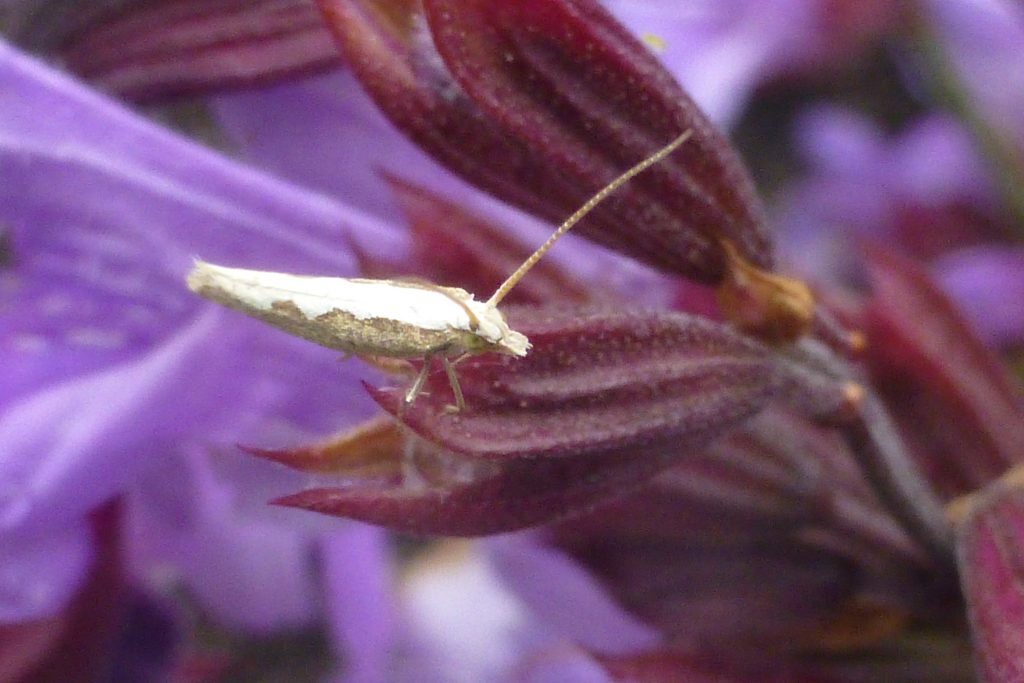This year there has been an enormous migration of tiny Diamondback moths (Plutella xylostella) into Britain from the Mediterranean or farther south. Millions appeared along the south and east coasts from 31 May into the first week of June.
On Friday 10 June I saw a small moth in the Demonstration Garden, initially amongst the community vegetable plots towards the east end. It then flew weakly and very low across to some Salvia flowers near the Botanic Cottage observation hut, where I managed to take a couple of photographs before it flew off again. From these I was able to identify it as one of these migratory Diamondbacks with their very distinctive wing patterning and long antennae. The species has been recorded in the Garden previously, in 2009 (see Mill in Sibbaldia 10: 158, 2012).
This year’s Diamondback migration has been massive and featured on BBC’s Springwatch programme on 31 May. The moths are very small (wingspan 13-15 mm) and migrate passively on the wind over thousands of miles. It’s possible that the huge numbers seen this month in the UK may be adults that have emerged from an earlier migration in March or April that resulted in millions of eggs being laid on their larval host plants, because for the last few weeks the wind has been blowing mainly from the north and east, rather than from the south as you might expect to be the case when the migrants originate from the Mediterranean or even the Sahara as is the case of the Diamondback. The larval host plants are members of the Brassicaceae or cabbage family. In some countries the caterpillars of the Diamondback are a pest. The life cycle is very short, so it remains to be seen whether the millions that have arrived or emerged in Britain this month will produce even more millions of caterpillars and an even bigger emergence later in the summer. Keep an eye out for them in your own garden, especially if you grow cabbages or related plants.


Kate Hughes
Thanks for this Robert. My allotment neighbour was asking about these just yesterday. Now I have an answer for him!
Cath
Yes I too have been wondering what these are when working in the plots. I’ve never seen them before.